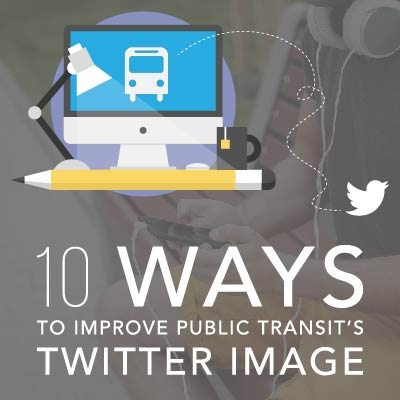
My job is to provide the best marketing and social media support I can to TransLoc and to our customers. Sometimes, that means thinking outside the box. For example, how do I help transit agencies change the conversation around public transit?
This might be one of the biggest problems with public transportation today—people shed a negative light on using public transit, saying it’s dirty, inefficient, or somehow less important because riders can’t afford a car. None of that is true. At least, not always. Sure, sometimes I noticed the streetcar in Portland wasn’t super clean, but that isn’t a qualifying stereotype. And not having a car or choosing not to use one just means those people get to be a little more creative with their mobility. Plus, they’re going to outlive the rest of the traffic-causing commuters.
But how do we change that stereotype? Seems impossible, right? I’m here to tell you that it really isn’t. It does, however, mean that all you transit agencies out there need to get active—with social media.
One thing I’ve come across over and over again during my interactions with our transit agencies is that social media in general is not a priority, and even if it was, they’re not really sure how to participate effectively. This seems to be the most evident with Twitter.
“There isn’t enough time” or “I don’t know how to use Twitter” are no longer acceptable excuses in today’s media-centric society. People expect public and private agencies to be active on social media, and Twitter is no exception. There is good news, though. I’m about to give you 10 steps to reinvent your Twitter presence without overwhelming yourself or your budget.
*Note: you have to actually set up a Twitter account first. So if you don’t have one, go do that.
- Learn the basics of how to use Twitter and make sure you have notifications set up in your account so you know when you’re being mentioned.
- Establish a social media policy and guidelines for your marketing people. You should also set up some template responses for angry passengers or common complaints. You can get more info on how to create a social media policy here.
- Get organized. Set up Hootsuite (for free!) or Sprout Social (not free) and get started with managing your social accounts in one place.
- Schedule regular or recurring posts ahead of time to make your life easier
- Practice social listening. Put ~10 min a day per social channel on your calendar and stick with it. Need a good cheat? Set up searches (aka “listeners”) for keywords like “public transit,” “city bus” or your agency’s name in Hootsuite or Sprout to keep track of the conversation. The key here is to skim the relevant content, not waste time slogging through millions of tweets.
- Share relevant content based on what you learned in your listening. Are people talking about your new bus line? Give them an update.
- Engage users, even when they’re not being nice. Let them know there is a human behind that Twitter handle and kill them with kindness. You’d be surprised what an effect simply responding will have on the tone of the conversation.
- Acknowledge frustrations. Letting people know you hear them is important to building trust in your relationships.
- When relevant, educate these users about the reality of their complaints. Admitting your system is flawed will not discourage users, but it will open up the conversation to focus on improvements and how you can do better. You might also get important feedback.
- Finally, just be willing to join the conversation. To quote Obama, “Change will not come if we wait for some other person or some other time. We are the ones we’ve been waiting for. We are the change that we seek”
Now go forth, and tweet your hearts out. I have faith in you.